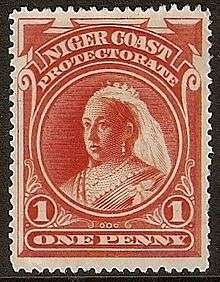Niger Coast Protectorate
| Oil Rivers Protectorate (1884–1893) Niger Coast Protectorate (1893–1900) | ||||||||
| Protectorate of the British Empire | ||||||||
| ||||||||
| ||||||||
| Anthem God Save the Queen | ||||||||
| Capital | Old Calabar | |||||||
| Languages | English and various local languages | |||||||
| Religion | Christianity, Yoruba religion, Islam, African traditional religion | |||||||
| Government | Colonial administration | |||||||
| Monarch | ||||||||
| • | 1884-1900 | Victoria | ||||||
| Historical era | New Imperialism | |||||||
| • | Established | 1884 | ||||||
| • | Disestablished | 1 January 1900 | ||||||
| Currency | Pound sterling | |||||||
| ||||||||
The Niger Coast Protectorate was a British protectorate in the Oil Rivers area of present-day Nigeria, originally established as the Oil Rivers Protectorate in 1884 and confirmed at the Berlin Conference the following year, renamed on 12 May 1893, and merged with the chartered territories of the Royal Niger Company on 1 January 1900 to form the Southern Nigeria Protectorate.

Queen Victoria on a stamp of the Niger Coast Protectorate of 1894.
References
- Thomas Pakenham, The Scramble for Africa (Random House, 1991), pp. 197–199
External links
This article is issued from Wikipedia - version of the 8/31/2016. The text is available under the Creative Commons Attribution/Share Alike but additional terms may apply for the media files.

